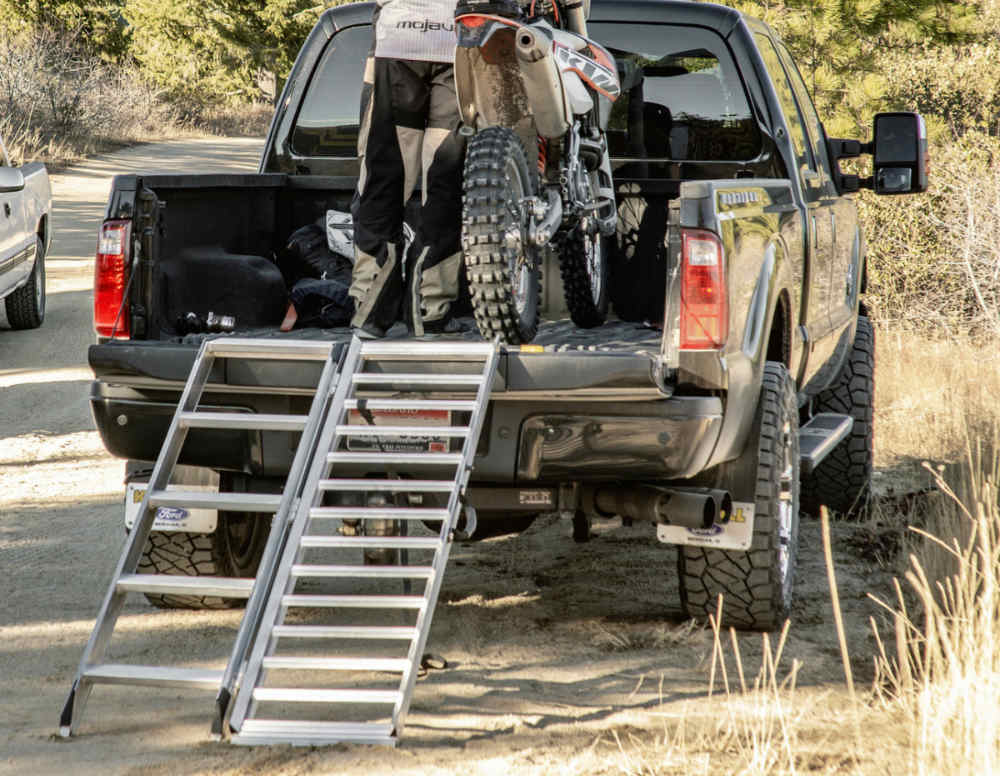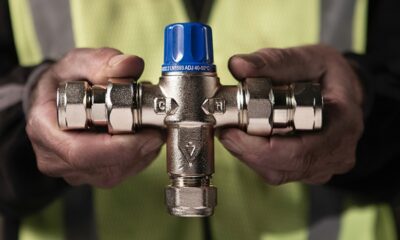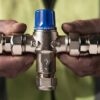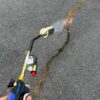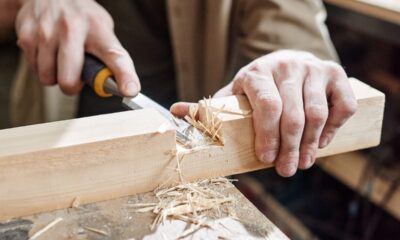Industry
Tips on How to Make the Most Out of Motorcycle Ramps
Something so simple yet so practical, a loading ramp is used on the daily to help load items into trucks, vans, and even boats. Virtually anything can be loaded with the help of a loading ramp. While for wider objects you’ll need multiple ramps, for two-wheelers, such as your motorcycle, you’ll only need one. You can use any ramp to get your motorcycle loaded, however, with a motorcycle ramp, you get a tailored solution which allows you to load your bike easier.
They have the perfect dimensions which means you won’t have to watch out where the tires are when pushing your bike up the ramp. As is the case when buying the ideal motorcycle cover and bike stand, you also need to consider quite a few things when buying motorcycle ramps.
What to Look for In a Motorcycle Ramp
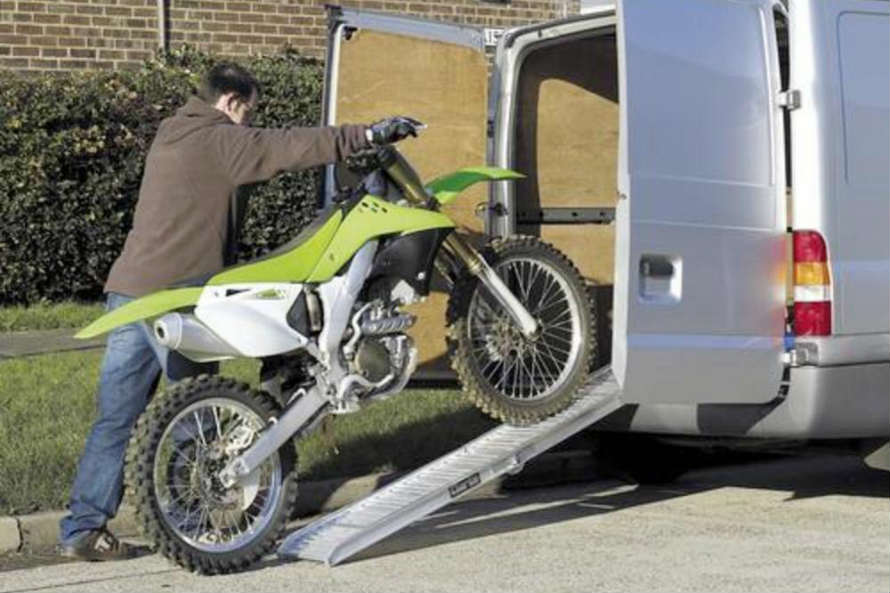
Style
There are a few different ramp styles you can choose from, the most common being straight and arched ramps. Straight ramps come at a softer angle than arched. This means that straight motorcycle ramps are not going to make you bottom out your bike as easily. You don’t have to worry about scraping the exhaust either. Arched ramps are better for motorcycles with larger wheelbases and low ground clearance as they offer an even softer approach angle. This leads me to the length of the ramp – straight ramps are usually longer and arched ones are shorter. While the former need more space than the latter, they are safer when using them on vehicles such as pickup trucks. Short ramps are best for trailers as they don’t have a high loading height.
Plate vs Rungs
Plate-style ramps are the best choice when it comes to the footing. They are great for both tires and walk up and often come with a textured surface on top to provide traction and grip. But they tend to be bulkier than ramps with rungs. Rung style ramps are more common than plate ramps. They also offer better traction as they have small gaps that are usually about 7 cm big that your tires will grip on. The gaps also help remove any debris stuck in the tires as you go up the ramp. Whilst they are lighter than plate ramps, rung-style ramps are not as stable. This can be easily resolved though by using tie-downs to keep them locked into position.
Bike Specs
The weight of your motorcycle will affect the ramp’s load-bearing capacity. This is why it’s best to go with one that has a higher load-bearing capacity than the weight of your bike. Ground clearance and wheelbase are also important. The former will dictate the minimum rise level of the ramp. The latter will determine the size of the ramp as bigger wheelbases require longer ramps.
Length
To determine the length of the ramp you need to measure the rise of the loading surface, the motorcycle wheelbase and ground clearance. These three measurements will give you the minimum ramp length needed. You can calculate this with the help of an online calculator.
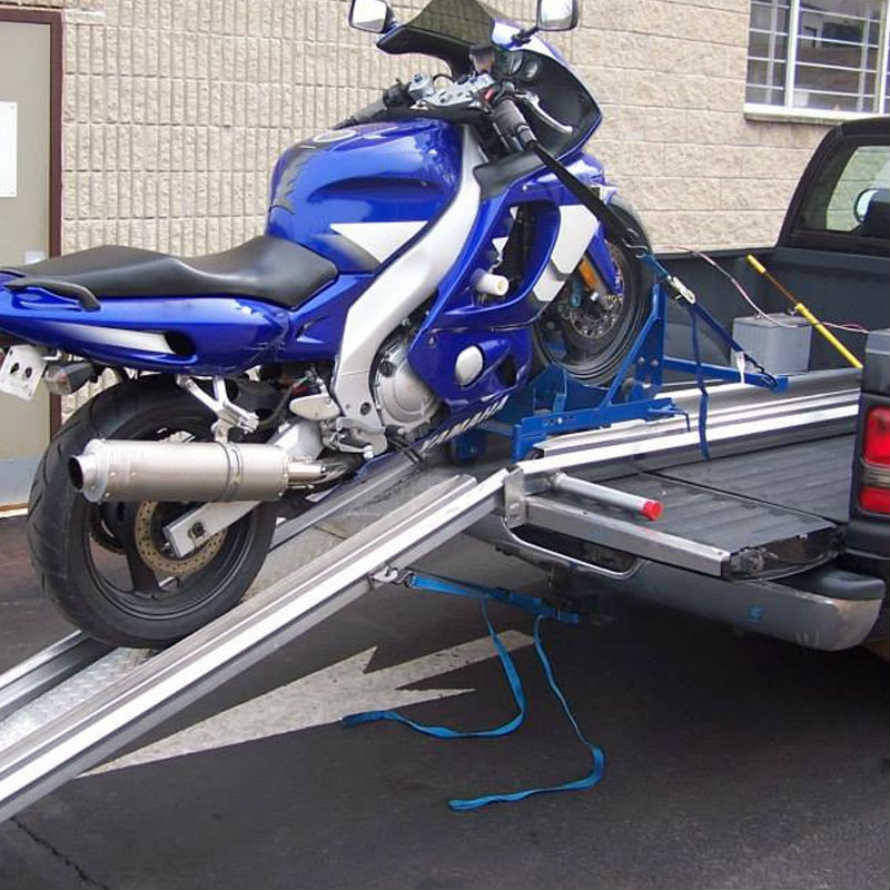
Connection Points & Features
The way the ramp attaches to the bed or tray is important too. You want a secure attachment like a synthetic coated tip with a locking pin. This will provide a secure attachment and enough grip to your tray/ bed. Every ramp will come with different types of features. You’ll find anti-slip surfaces and/or support legs for a more stable surface on most motorcycle ramps.
How to Push a Motorcycle up a Ramp?
While there are a lot of ways you can load a motorcycle up a ramp, there’s one that you may find the most convenient. This involves placing the ramp centred on the truck bed or tray and securing it with a ratchet strap to the truck or trailer. This way the ratchet applies downward pressure and it keeps the ramp locked in position.
To push a motorcycle up a ramp you’ll need a mate to help you. This is not a one-man job as one of you needs to control the steering and the brakes while the other one pushes the motorcycle. Once you’ve determined who will be doing what, get the motorcycle up to the bumper point.
When you have the motorcycle there, the one who’s pushing the bike needs to get into the truck bed or tray and whilst the other holds the motorbike with the brake on. When one person is in the truck bed, the other person hands the bike off to them. This way whoever is in the truck bed/ tray gets to control the steering and the brakes while the other one pushes the bike up into the bed/ tray.


